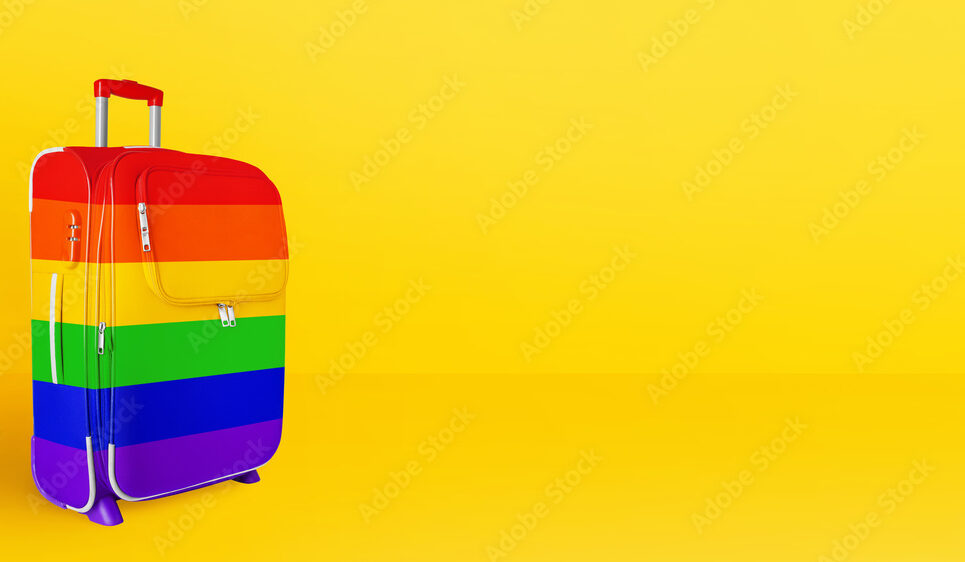From hotels to airlines, corporations in the travel and tourism sector can have a big impact on creating more inclusive travel experiences. Not only is this the right thing to do, but actively creating inclusive environments can also positively affect their bottom line.
Developing and advancing diversity, equity, and inclusion (DEI) programs is already an imperative in travel and tourism, particularly given the perennial talent drought in the sector. Marriott CEO Anthony Capuano recently cited the labor shortage as “the most significant challenge being faced by the hotel industry.” In this context, and with general population data showing that 50 percent of candidates won’t consider an organization with a bad employer brand and 67 percent of job seekers look at the diversity of the workforce, DEI simply can’t be ignored from a talent recruitment and retainment perspective.
However, to effectively put programs in place, organizations first need to engage and learn from diverse perspectives to identify and understand what barriers and challenges exist. The experiences of their customers will allow for them to take a holistic approach to addressing these issues.
So, what should corporations do?
Double Down on DEI Efforts
The good news is that most large corporations have at least gotten started on their DEI journey. The majority have created DEI policies, installed DEI teams, stood up ERGs, rolled out training, and launched professional development initiatives for underrepresented talent. Additionally, many are starting to benchmark against other companies and have applied to Seramount’s Best Companies List. From gender parity initiatives to supplier diversity programs, here are some strong examples of what companies have done:
IHG has assigned every member of their executive team a DEI-focused goal, committed to gender parity at group leadership levels, and rolled out an inclusion training program across the organization, amongst other initiatives. SIXT has launched a particularly bold initiative with their “Female Career Tandem.” The initiative means that all employees, regardless of gender, are “accompanied in their professional and personal development by a female manager for over a year.”
United has rolled out systemwide trainings and created a mutual mentoring program that pairs leaders across levels and cultures. The airline also recently “updated appearance standards for uniformed, customer-facing employees to reflect a modernized look and more inclusive standards to better express individuality,” a development that we have now been seeing at many other organizations, such as Disney.
Some organizations have also done great work in expanding the reach of their DEI programs to better account for external stakeholders. Hilton, for example, has developed a robust supplier diversity program and now has more than 2,500 diverse- and women-owned suppliers and a total of more than $221 million in diverse supplier spend. In 2022, Marriott launched “Bridging the Gap,” its multi-year $50 million hotel development program to “help propel historically underrepresented groups in the journey to hotel ownership.”
Learn About Customer Experiences from Diverse Perspectives
While having a more diverse workforce and an inclusive internal culture will contribute to a more inclusive experience for customers, that alone is not enough to really move the needle.
Many organizations have started taking different approaches to tapping into diverse perspectives and gain a better understanding of different travel experiences. American Airlines recently formed its Community Council, made up of seven distinguished Black leaders, which is intended to “provide the airline with critical objective insight, perspectives, and support on the challenges Black customers face.” This approach has already led to more Black representation in dining, in-flight products, and entertainment.
It’s also very important to dig into the data where possible. For example, Airbnb has conducted an extensive audit of metrics such as “booking success rate” to better understand where both conscious and unconscious discrimination exists in customer experiences.
However, one of the greatest opportunities for better understanding diverse experiences and perspectives is through engaging employees and activating ERGs. Hyatt is a fantastic example of a corporation doing just that. Hyatt’s approach is that “each Diversity Business Resource Group should be focusing on inclusionary goals and objectives that ultimately influence business results in the categories of workforce, workplace, and/or marketplace.”
Translate Insights into Action to Create More Inclusive Travel Experiences
To turn those insights into more inclusive customer experiences, corporations then need to act to implement change. This involves commitment from stakeholders across all business lines.
Airbnb, through Project Lighthouse, has created a resource center to help hosts learn how to foster belonging, including tips for hosting guests with accessibility needs and advice for welcoming LGBTQ+ guests. Also, Airbnb reports removing 1.3 million people from the platform for “declining to treat others without judgement or bias.” Finally, their humility in stating “there’s still a lot more work to be done” is realistic and commendable.
Disney has made numerous changes thanks to feedback actively sought from “cast members” around the world. For example, in 2021, several rides with racist connotations were “rethemed.” Disney has also made strong inroads in creating more inclusive experiences for neurodivergent individuals by partnering with firms specialized in neurodivergent accessibility to start providing break areas for overstimulation, companion bathrooms, and attraction details that gauge level of stimulation.
Marketing and communications departments also have a key role to play in the way they position their brands. A highly visible commitment to DEI, such as displaying awards and inclusive imagery in advertising, can help reinforce inclusion and belonging. Airlines including Lufthansa, Alaska Airlines, and Avianca have started deploying airplanes with special Pride livery to demonstrate their support of the LGBTQ+ community. Rainbow flags are also frequently seen at hotels and other establishments.
Hilton is a particularly noteworthy example of a large corporation doubling down on inclusive marketing. The company has consistently leveraged the insights of their Pride TMRG (Team Member Resource Group) both to help create “even more meaningful and inclusive travel experiences” and develop much more inclusive marketing. In general, Hilton has strived to leverage images of diverse guests, stating, “We’re proud to depict and reflect our guest diversity in our advertising.”
Delta, in addition to ensuring the use of diverse imagery in its own advertising, is going one step further. Through their “Faces of Travel” initiative, the airline created a “collection of visual assets that showcases a diverse range of travelers in various destinations that breaks away from stereotypes.” They’ve made this available to Adobe Stock’s more than three million users at no cost.
All that being said, it’s important for marketing and communications to ensure that well-intentioned attempts to celebrate diversity and inclusion don’t cross certain lines and end up causing offense. There are far too many examples of marketing missteps involving cultural appropriation or insensitive language or imagery. Marketing teams should engage their DEI team to leverage their insight. Careful wording is important, and seeking out diverse perspectives can help avoid potential damaging blunders.
Whilst this blog focuses on examples from travel and tourism, there are lessons here that can be applied across all industries. Organizations need to ensure that internally they are leading the way in DEI but also find ways to learn from diverse perspectives and then translate that insight into action to create more inclusive and equitable experiences for all their stakeholders, both internal and external.
Contact me directly at [email protected] to learn more about how Seramount’s DBP Membership can support the advancement of your organization’s DEI strategy.


